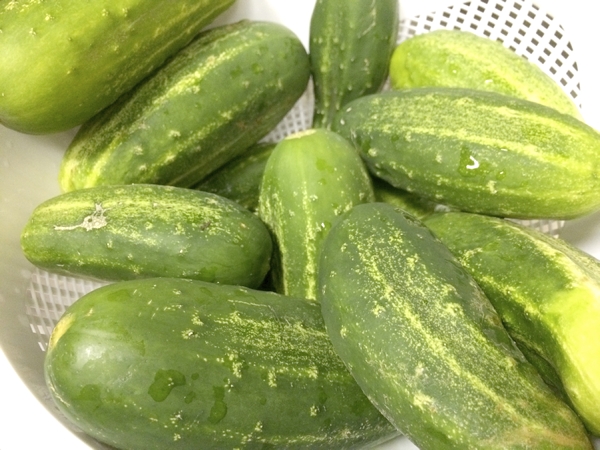Toi Degree: Best advice for canning pickles
Published 12:00 am Friday, July 8, 2016

- Cooperative Extension The right size cucumbers for refrigerator pickles.
So Danélle Cutting’s out in the kitchen working on canning pickles while I write my article. She just insists on making pickles today and I will join her in a bit; I just need to get this done first. Her vision materialized sometime Monday afternoon on the Fourth of July, when she texted me that she had a whole lot of cucumbers and wanted to pickle them. We didn’t have time Tuesday, so today it is.
Her thoughts and sights are set on refrigerator pickles … bread and butter and dill pickles. The key to successful canning regardless of what you’re canning is to start with fresh produce. That means you need to get produce that has been picked the same day or within a few hours of being processed.
When pickling, do not use produce that has been waxed; this will not make good pickles. For pickles the National Center for Home Food Preservation outlines it so: Select fresh, firm fruits or vegetables free of spoilage. Measure or weigh amounts carefully, because the proportion of fresh food to other ingredients will affect flavor and, in many instances, safety.
The next thing is to make sure that you have selected an approved recipe, which would be one from the “Ball Blue Book of Preserving,” USDA Publications, and National Center for Home Food Preservation or The University of Georgia. I will include the links to them all at the end of the article.
After selecting an approved recipe, read it to make sure that you understand it and most importantly follow it. Most recipes are pretty simple; just don’t find one off the internet that doesn’t have a final processing step. A final processing step is either finishing the process in a hot water bath, pressure canner, refrigerator or freezer.
Then there is the storage of canned foods after testing jar seals to make sure they are sealed and if not, reprocessing within 24 hours. Remove ring bands, wash the lid and jar to remove any food residue (make sure not to disturb the sealed lid); then rinse and dry jars. Label and date the jars and store in a clean, cool, dark place. For best quality, store between 50 to 70 degrees and use within a year. Storing jar above 95 degrees or near hot pipes, a range, a furnace, in an uninsulated attic or in direct sunlight will cause a loss of quality in a few weeks or months and may even spoil.
Canning resources:
Ball Blue Book of Preserving: http://www.freshpreserving.com/home
National Center for Home Food Preservation: http://nchfp.uga.edu/
The University of Georgia: http://nchfp.uga.edu/publications/publications_uga.html
USDA Publications: http://nchfp.uga.edu/publications/publications_usda.html
Refrigerator pickles are different from those that are processed in a canner of a hot water bath and it is recommended that they are used within three months. We hope that you will try them and oh, yeah, Happy Canning.
For more information on canning for other food and/or nutrition topics contact Toi Degree, Family & Consumer Education Agent with the North Carolina Cooperative Extension, Rowan County Center. You can reach Toi at 704- 216- 8970 or toi_degree@ncsu.edu.




